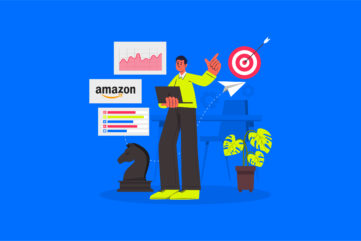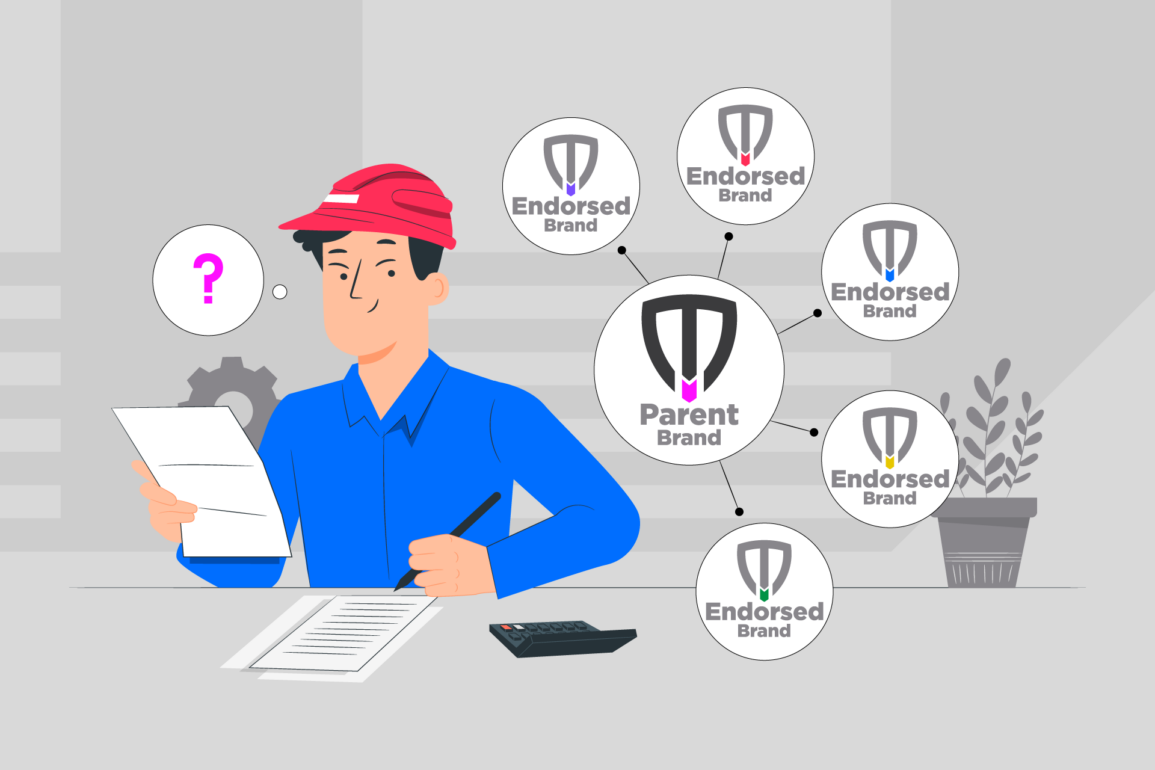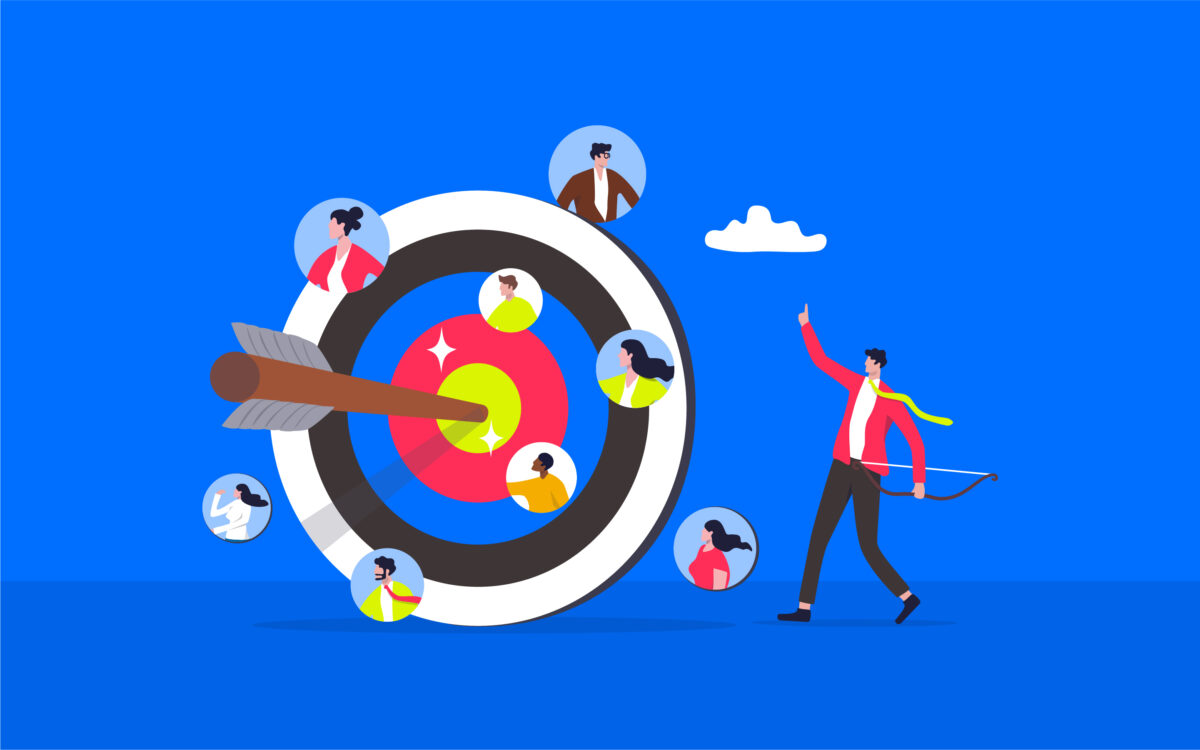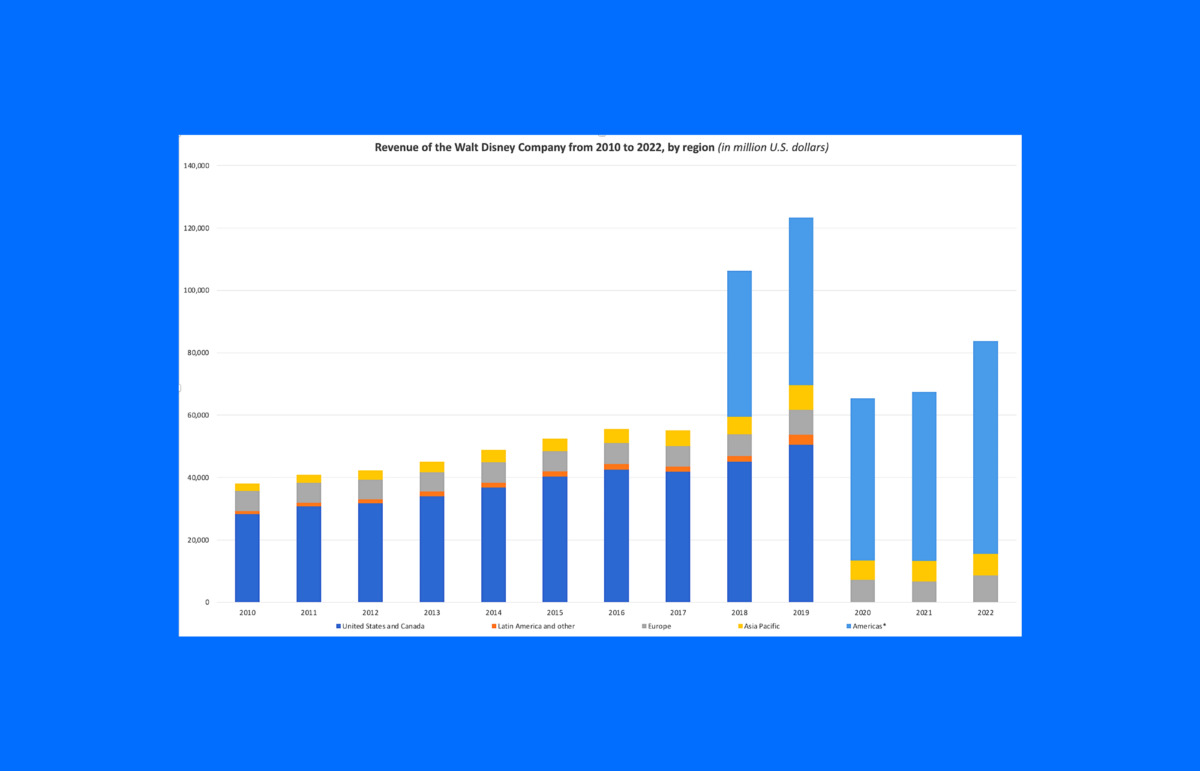Disney marketing strategy: The secrets behind the magic

The Disney marketing strategy is one of the most inspiring examples of successful promotion around. Through a careful approach to advertising and branding, Disney has positioned itself as a beacon of enchantment and imagination, capturing the attention of consumers worldwide.
Disney’s reputation as the “happiest place on earth” didn’t happen by accident. For more than a century, the company has invested heavily in building deep emotional connections with its audience. Combining magical storytelling and memorable characters, with cross-channel campaigns.
It’s the innovative approach to marketing and branding embraced by the Disney company that has transformed the organization into one of the most valuable brands around.
Today, we’re going to take a closer look at the various components of Disney branding and marketing that have helped to keep the company in the spotlight for generations.
The Disney brand strategy: The Disney brand promise
Let’s start with a brief look at Disney’s branding.
The Walt Disney Company first launched as the “Disney Brothers Studio” in 1923, starting life as a simple animations studio. The company immediately positioned itself as an imaginative, creative brand, by consistently coming up with new, relatable characters that would transcend generations.
For years, the Disney brand promise has revolved around creating “entertainment with heart”. This is shown in the company’s movies, television shows, theme parks, and countless other products. The company is on an ever-evolving mission to entertain, inspire, and delight its audience.
Every aspect of the Disney brand is cultivated to create an emotional connection.
The Disney logo is based on the handwritten signature of Walt Disney himself, giving the company a sense of heritage and nostalgia, which contributes to its marketing mix.
Disney’s brand strategy also relies heavily on an inclusive, warm tone of voice. The messaging produced by the brand across every channel is family friendly, engaging, and motivational. Even the stories the company tells are brimming with highly relatable themes and concepts.
The brand positioning of Disney: Disney positioning
The Disney positioning strategy revolves around a brand archetype known as the “magician”. The company showcases a charismatic, magical, and innovative identity, that inspires audiences.
Disney’s brand positioning statement is:
“Disney provides unique entertainment for consumers seeking magical experiences and memories. Disney leads the competition by providing every aspect of related products and services to the world and appealing to people of all ages.”
Disney separates itself from other competitors in the animation, cinematic, and entertainment industries, with unique intellectual properties and stories. There are more than 2,000 Disney characters in the world today, all with their own unique personalities.
The company creates content designed to appeal to people of all ages and backgrounds, from the Marvel Studios collection to the nostalgic stories of Mickey and Minnie Mouse.
A significant part of the Disney brand positioning strategy also relies on its history and heritage. The Mickey Mouse figure, first created in 1928, still acts as a mascot for the brand today.
Additionally, insights into Disney’s history are constantly used in marketing campaigns and celebrations. Experiential events like Mickey Mouse’s 90th birthday exhibit and the interactive museum of Walt Disney history at Disney theme parks give the brand a sense of longevity.
Today, the Walt Disney company is valued at over $164.07 billion, and the company holds assets worth more than $203.63 billion, making it one of the most powerful brands in the world.
The Disney target market: Disney target audience
With its strong presence in the animation and family entertainment market, it’d be easy to assume that Disney’s target audience is young children. However, while Disney certainly connects with a younger audience, the brand also creates content to appeal to people in all age groups and demographics.
The brand positioning of Disney as the “most magical place on earth” works well at appealing to the imaginations of young children, but it also resonates with adults of all ages.
Disney’s target market is located worldwide, though the vast majority of the company’s revenue is currently generated in the Americas. The company produces versions of its content in virtually every language imaginable, and even has theme parks located in various parts of the globe.
https://www.statista.com/statistics/193263/revenue-of-the-walt-disney-company-in-different-regions/
Disney’s target audience isn’t just limited to the entertainment sector either. The company produces merchandise and real-world experiences (its theme parks) to appeal to a broad range of demographics.
It also recognizes the importance of inclusivity and diversity in its product and marketing. Disney products and experiences are intended to support a wide range of cultures, ethnicities, and identities.
With the launch of Disney+ in 2019, Disney expanded its audience even further, to include new generations who prefer to watch content outside of traditional channels.
Disney market segmentation: Disney customer segments
As such a wide-reaching brand, Disney knows the importance of segmentation to create personalized experiences for the huge variety of niche customers it serves.
The Disney market segmentation strategy allows the company to create different products and unique offerings that appeal to Disney fans in every sub-culture and community.
Disney demographic segmentation
From a demographic perspective, Disney appeals first and foremost to families of all shapes and sizes. This includes newlyweds, parents with young children, and multigenerational families.
Disney’s products and experiences appeal to all age groups and genders, as reflected in the wide range of merchandise, TV content, movies and experiences delivered by the brand. For instance, Disney World offers rides for all ages and heights, as well as nightlife and clubs for adults.
Though a significant portion of Disney’s audience belong to the age groups of 2-54, the company still has a strong presence with older adults.
Disney geographic segmentation
As mentioned above, Disney is a globally recognized brand, with customers located around the world. The company’s largest audience is in the United States and Canada. This is reflected by a larger operating income in these regions compared to Europe, Latin America, and Asia Pacific.
Disney movies and television shows are aired all over the world, and merchandise is available in both online and offline stores globally. Disney+ is also available in more than 100 countries.
Additionally, Disney theme parks and cruises operate in various locations around the globe. 6 of the top 10 most visited amusement parks in the world belong to Disney.
Disney behavioral segmentation
Most Disney audiences are big fans of entertainment and movies. In 2021, Disney stood as the leading, and most valuable film studio in the US and Canada, with a market share of 25.5%.
The Disney parks experience is generally targeted towards middle income families, and Disney theme park goers are highly loyal, with 70% returning for additional experiences.
In recent years, Disney has also strengthened its connection with modern customers and younger generations interested in on-demand video streaming. The number of subscribers to the Disney+ app has increased consistently over the last few years.
Disney psychographic segmentation
With its brand archetype as the “Magician”, Disney appeals to customers characterized as ambitious and “dreamers”. They’re drawn to the promise of magical experiences promised by the brand. Many people targeted by Disney are also searching for nostalgia and escapism.
This is evidenced in the company’s commitment to creating not just new stories, but updated versions of their original movies and products. The use of nostalgia forms the heart of Disney marketing. The shape of Mickey even appears in various theme parks and products.
The Disney marketing plan: Disney’s marketing mix
Disney’s marketing strategies revolve around creating a deep emotional connection with its target audience. The company has created a timeless, and iconic brand, associated with magical experiences, family entertainment, and imagination.
The marketing mix deployed by the brand (comprising the four P’s of marketing) demonstrates how the company successfully reaches its global market.
Product
Disney has taken a versatile approach to its product offerings, infusing Disney magic into TV shows, movies, merchandise, and theme parks. The company is well known for its high-quality content, which appeals to audiences of all ages.
The company puts the “story” before the product, to create endearing and relatable characters that transform its product offerings into meaningful purchases for customers. Many of Disney’s marketing strategies rely on its vast library of intellectual property.
Price
Disney produces different price ranges for its various products and target audience. The price of Disney movies in the theatre, for instance, or available to download or purchase online align with the average prices in the market.
However, Disney’s theme park experience is a little more expensive, though the company does offer discounts and promotions to make the parks more accessible to families. Disney’s consumer products range from affordable items like stationery, to designer handbags.
Promotion
Disney is a true master of promotion. The company leverages a variety of multi-channel tactics to create excitement for its products and experiences. This includes traditional television advertising and billboards, as well as experiential marketing.
Disney also leverages modern technology and digital marketing efforts. The company has a strong presence across multiple digital platforms, with a consistent approach to content marketing. It also partners with other brands to create co-branded experiences and products.
Place
As a global brand, Disney ensures its product offerings are available in a variety of places, from the online world to retail stores and theme parks. The company has strategically placed theme parks in locations that are easily accessible to its target audience.
While physical Disney stores are less common today, the company’s merchandise is still sold by a range of major shopping centers and shops around the world. Disney also offers access to merchandise and digital experiences through its website and apps.
How does Disney advertise? Does Disney advertise?
Disney invests heavily in advertising across a variety of channels. In 2022, Disney spent over $7.2 billion on advertising, increasing its investment by 157% from the previous year.
The company takes a cross-channel approach to advertising, ensuring it can connect with customers both offline, and online, on virtually every channel.
Digital Disney marketing campaigns
Disney’s marketing strategy and advertising campaigns appear frequently throughout the online world. The company engages with its audience across multiple digital platforms, utilizing email marketing, social media, and online content creation.
Disney has its own blogs and websites for each of its product offerings, including tourist blogs for travelers, and sites showcasing movies and content. The company also invests in PPC ads for its Disney+ campaigns and latest movie releases.
Perhaps one of the most compelling aspects of Disney’s digital advertising strategy is its strong social media presence. The channel shares posts across a range of social platforms, from TikTok to Instagram. It also creates dedicated channels for Disney+, and the Disney theme parks.
Much of Disney’s social media campaigns focus on drawing attention to its latest celebrations and products, and championing user-generated content. This gives the company an excellent opportunity to engage and connect with its fans.
Disney’s offline advertising strategy
The Disney marketing plan expands into the offline world too. Billboards, radio advertisements, and television ads are common for the company. The brand frequently uses television ads to showcase new and upcoming movie and television releases, and draw attention to its products.
The company also produces ads specifically designed for certain parts of the year. For instance, Disney produces a Christmas advert once a year, designed to inspire and delight its audience.
Disney also uses bus shelters, transit advertising, and similar strategies to promote theme parks and events, particularly in areas located close to Disney theme parks. The brand also takes an innovative approach to experiential marketing and exclusive experiences.
Disney even hosts special events for members of its community, where they can learn more about the company, and interact with famous characters.
What is Disney’s marketing strategy? Elements of Disney marketing
Disney’s marketing efforts largely revolve around a few key factors. The company doesn’t just aim to stand out in the entertainment industry. It uses its branding and marketing to connect with customers on the basis of experience.
Some of the core components of the Disney marketing strategy include:
1. Know your audience and appeal to them emotionally
Every product produced by Disney, from the Disneyland parks to the interactive media and movies produced by the team, is designed to appeal to a specific audience. Disney invests significant time and effort in getting to know its audience, so it can offer the most immersive experiences possible.
The company learns about the challenges and issues facing its customers, so it can create stories that appeal to people on a deeper level. For much of Disney’s audience, nostalgia also plays an important role in cementing the value of the brand.
This is why Disney’s theme parks and shows generally include a lot of the characters customers grew up with, from Donald Duck and Mickey Mouse to the Little Mermaid and the Lion King. The company has even created live-action versions of its most popular movies.
Notably, Disney also responds quickly to feedback from its customers.
After opening the Tokyo Disneyland park, the company discovered that serving Japanese food at its parks didn’t actually appeal to its audience. Customers wanted an American experience. As a result, they updated their restaurants to offer classic American staples.
2. Design an experience
As mentioned above, Disney wants to position itself as a conveyer of experiences, not just movies, television shows, and theme parks. As such, they analyze every aspect of every product they produce carefully, to ensure it has the right impact on customers.
For instance, in Walt Disney World theme parks, the company doesn’t just provide rides and attractions for every age. It also introduces experiential interactions that appear to every sense.
The theme parks look fantastic, but they also have unique sounds in each section, as well as carefully structured smells, created by a patented Disney machine.
Disney focuses on creating immersive experiences in the entertainment landscape too, creating experiential experiences like “sing-along” movies for its younger audiences. The hard work of the company pays off, cementing it in the minds of its target audience.
3. Unforgettable storytelling
Long before other marketing groups discovered the benefits of storytelling, the Disney marketing strategy already revolved around the creation of unique narratives. The clever use of content, both in movies and television shows, and in marketing campaigns, elevates the brand.
Every advertisement and commercial reminds customers of the emotions that Disney aims to create with its compelling products.
Disney knows how stories can ignite our emotions and memories. The company believes strongly in the power of narrative, and transporting its customers into new worlds.
Disney’s approach to storytelling goes in the opposite direction of most other brands. Many companies create a product and then build a narrative around that product.
On the other hand, Disney creates the story first, then builds its products based on that story. For instance, when Disney purchased the Star Wars brand, it created a variety of other products and TV shows building out from the original tale.
Learning from the Disney marketing plan
While not every company will have the same Disney marketing budget to work with, most brands can learn something from Disney’s approach to creating a unique experience for their audience. Disney uses various different platforms and strategies to constantly connect with its customers.
Its compelling approach to marketing teaches us to:
1. Maintain a consistent brand and persona
Disney retains consistent themes throughout all of its marketing campaigns, and products. Cast members at Disney theme parks are the same in virtually every part of the world. Even the signatures given by these professionals are designed to look the same in every part of the world.
2. Tell stories that resonate and inspire
Disney also ensures it constantly tells stories that resonate with its audience on a deeper level. It appeals to universal feelings and emotions in all of its content.
Plus, Disney is committed to reaching its audience with real human tales. The company honors its human connections, and pays homage to the inspiration behind its narratives:
3. Connect with human emotions
The Disney marketing strategy is impactful because it constantly speaks to us on an emotional level. It’s not just Disney movies and programs that share emotional messages, but the ad campaigns too.
For instance, just look at the Disney Christmas ad from 2022:
4. Collaborate with other companies
Disney forms partnerships with other companies all over the globe to help it reach a wider audience. There have been countless McDonalds campaigns which have included Disney toys. Disney has even worked with famous fashion designers to create unique branded collections.
5. Make room for new fans
Although Disney constantly appeals to its nostalgic existing fans with classic stories, it also makes room for growth. The company invested in the Marvel comics company, as well as Star Wars in recent years, to ensure it could produce a diverse range of content for every type of customer.
The incredible Disney marketing strategy
The Disney marketing strategy demonstrates just how powerful the right branding and advertising campaigns can be for a growing company.
Disney connects with its audience across virtually every channel and medium, giving it an incredible reach compared to other entertainment brands. In all of its segments, Disney’s marketing strategy focuses on consistently delivering a unique experience.
The company doesn’t just want its parks to be the “most magical place on earth”, it ensures that every experience it delivers has its own sense of magic.
Through consistent and memorable branding and marketing, Disney ensures that it can capture a crucial space in the hearts and minds of its target audience. This has helped the organization to become one of the biggest and most lucrative brands in the world.
Fabrik: A branding agency for our times.
































